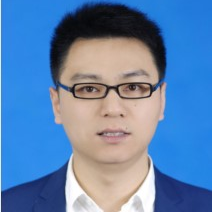Two-Dimensional Nanomaterial-Based Heterostructures
A special issue of Nanomaterials (ISSN 2079-4991). This special issue belongs to the section "2D and Carbon Nanomaterials".
Deadline for manuscript submissions: closed (30 March 2023) | Viewed by 2168
Special Issue Editors
Interests: nanophotonics; coherent processes in hybrid nanostructures; plasmonics; quantum devices
Interests: thin films and nanostructures including synthesis; characterization and device applications; interfaces at atomic scales in nanocomposites; heterostructures and nanohybrids for applications in photodetectors; sensors; metal-insulator-metal tunnel junctions; memristors
Special Issues, Collections and Topics in MDPI journals
Interests: computational physics and chemistry; 2D materials and heterostructures; electronic and optoelectronic devices; energy materials; cluster science
Special Issues, Collections and Topics in MDPI journals
Special Issue Information
Dear Colleagues,
The unique physical, optical, and electronic properties of the atomically thin layers of semiconductors have made them promising hosts for the investigation of a wide range of innovative device applications and fundamental research activities. Currently, such materials are being used for the development of novel optical devices, ranging from photo-detectors, lasers, and photo-transistors, to memory cells and sensors. These materials are forming the foundations of new material research frontiers for large-scale two-dimensional electronics, quantum coherent and computations, and quantum control processes. Heterostructures consisting of atomically thick materials have further expanded the horizon for higher degrees of control of the optical and electronic properties of two-dimensionally confined excitons and carriers, offering new possibilities for spin transport, valleytronic devices, and quantum materials. Extensive research activities have also been devoted to applications of hybridized systems consisting of atomically thin heterostructures and plasmonic/photonics resonances, opening new frontiers for spin valley polarization control, hot electron devices, sensors, and intervalley coherent coupling processes. This Special Issue covers a wide range of applications, fundamental physics, fabrication, and the characterization of two-dimensional materials and their heterostructures. It also covers the hybridization of structures with plasmonic and photonic nanostructures and arrays, and their broader device applications, ranging from photonics and electronics devices to quantum control processes and sensors. We also welcome review contributions that bring together state-of-art techniques of fabrication and applications of such materials.
Dr. Seyed Sadeghi
Dr. Judy Z. Wu
Dr. Guangzhao Wang
Guest Editors
Manuscript Submission Information
Manuscripts should be submitted online at www.mdpi.com by registering and logging in to this website. Once you are registered, click here to go to the submission form. Manuscripts can be submitted until the deadline. All submissions that pass pre-check are peer-reviewed. Accepted papers will be published continuously in the journal (as soon as accepted) and will be listed together on the special issue website. Research articles, review articles as well as short communications are invited. For planned papers, a title and short abstract (about 100 words) can be sent to the Editorial Office for announcement on this website.
Submitted manuscripts should not have been published previously, nor be under consideration for publication elsewhere (except conference proceedings papers). All manuscripts are thoroughly refereed through a single-blind peer-review process. A guide for authors and other relevant information for submission of manuscripts is available on the Instructions for Authors page. Nanomaterials is an international peer-reviewed open access semimonthly journal published by MDPI.
Please visit the Instructions for Authors page before submitting a manuscript. The Article Processing Charge (APC) for publication in this open access journal is 2900 CHF (Swiss Francs). Submitted papers should be well formatted and use good English. Authors may use MDPI's English editing service prior to publication or during author revisions.
Keywords
- atomically thick materials
- heterostructures
- plasmonics
- photonics
- nanostructures
- graphene
- transition metal dichalcogenide
- optical and electronic properties
- devices








